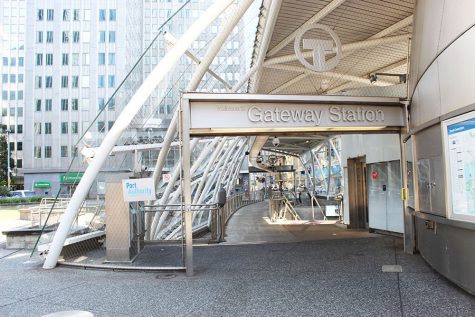Downtown offers boatloads of options for transport
PAT bus, incline among methods of transportation through city
August 21, 2019
Students from all over the globe enroll at Point Park University every year. For students more familiar with the city, using the subway, commonly known as the “T” here, or catching a bus is no sweat; but for others, it can be incredibly intimidating.
For those who are unfamiliar, provided is a guide to aid the maneuvering of Pittsburgh’s public transportation system.
One handy tool at the disposal of nearly every public transportation veteran in the city is a ConnectCard. A ConnectCard is essentially a prepaid card that can be used to pay for the bus, incline or the T.
While cash can also be used, ConnectCards can be much more convenient for frequent use of Pittsburgh’s public transportation. While cash riders pay $2.75 when riding the bus, ConnectCard users only pay $2.50. New ConnectCards cost $1 and can be bought at the Port Authority Service Center at 534 Smithfield Street, Downtown Pittsburgh, which is open weekdays from 7:30 a.m. to 5 p.m; as well as other locations, all of which can be found on the ConnectCard official website.
ConnectCards can store cash value to purchase rides, but for more frequent riders, calendar based annual, weekly and monthly passes are also available. Reduced-fare ConnectCards are also available for riders with disabilities. To find more information on fares, visit the Fares page on Pittsburgh Port Authority’s website.
To use a ConnectCard when using public transportation, just tap it to the orange farebox pad. A green light signifies that the fair has been paid and the passenger may proceed. ConnectCards can be reloaded online or at various ConnectCard machines in the area.
The bus system is the farthest-reaching form of Pittsburgh public transportation. Bus schedules can be found on the Port Authority website or at the bus stops in the city. Times will be made available on the schedules, but on weekends and holidays, the buses do not run as often as they do on weekdays.
When bicycling to a bus stop, Port Authority buses offer a rack on the front of the bus to hold bicycles for the duration of a bus ride. When planning on putting a bicycle in the bicycle rack on the front of the bus, make sure to let the operator know before doing so.
Paying attention on the bus is vital so a passenger can know when it’s their time to get off. When the bus announces that it’s approaching a stop, push one of the “stop request” buttons on the hand rails or pull down on the cable that runs along the sides of the bus.
Pittsburgh’s inclines serve as a quick and efficient way to get to and from Mt. Washington. The Monongahela Incline is located on the same side of West Carson Street as the Station Square light rail station. The Duquesne Incline is a slightly longer haul. It’s about a mile’s walk from Station Square to the Duquesne Incline, but there are also busses that service to the Duquesne Incline from downtown. The prices to use the incline differ depending on what kind of ticket is being bought and how the ticket is being paid for. If using a ConnectCard to pay, a one way trip will cost $2.50, and a round-trip will cost $3.50. If using cash to pay, a one way trip will cost $2.75, and a round-trip will cost $5.25.

Gateway Station sits just outside of Market Square and is one of the stops that does not require a paid fare if staying
within the city. Gateway and Wood Street Station are within a short walking distance from campus.
Lastly, Pittsburgh’s light rail system works very similarly to the bus system. Schedules can be found on the Port Authority’s website or there are paper schedules available throughout various locations in Pittsburgh. Early arrival is recommended, as the times on the schedules are approximations.
Similar to the “stop request” buttons and cables on a bus, passengers must push on a black strip near the top of the windows to request a stop.
If a ride on the light rail requires payment, it should be paid before the ride if the ride is going toward downtown, and after the ride if it is heading away from downtown. Stations between First Avenue and Allegheny are free to ride, so don’t worry about providing payment when traveling between these stops.
If something or someone on any public transit system causes an unsafe or questionable feeling, go to the front of the bus or rail car and talk to the operator. While waiting for the “T,” the loud speaker echoes, “When it comes to safety, we could always use a second set of eyes. If you see something, say something.”
Pittsburgh’s public transportation is an incredibly useful, robust system. Any further questions about issues regarding public transportation not covered in this article may be addressed on the FAQ page of the Pittsburgh Port Authority’s website or Point Park’s Commuter Resources.


















Jeff Bensch • Aug 27, 2019 at 2:43 PM
Why isn’t Point Park University part of the U-Pass program now that the busses are no longer free within the city limits?